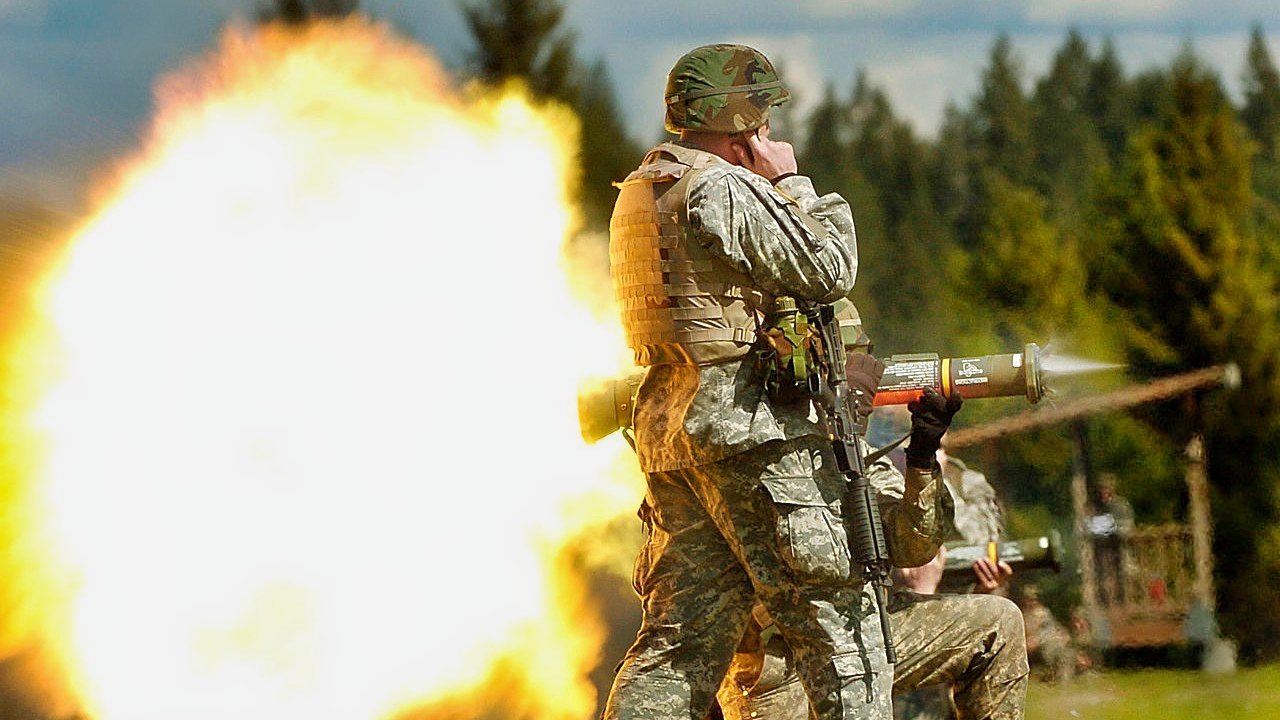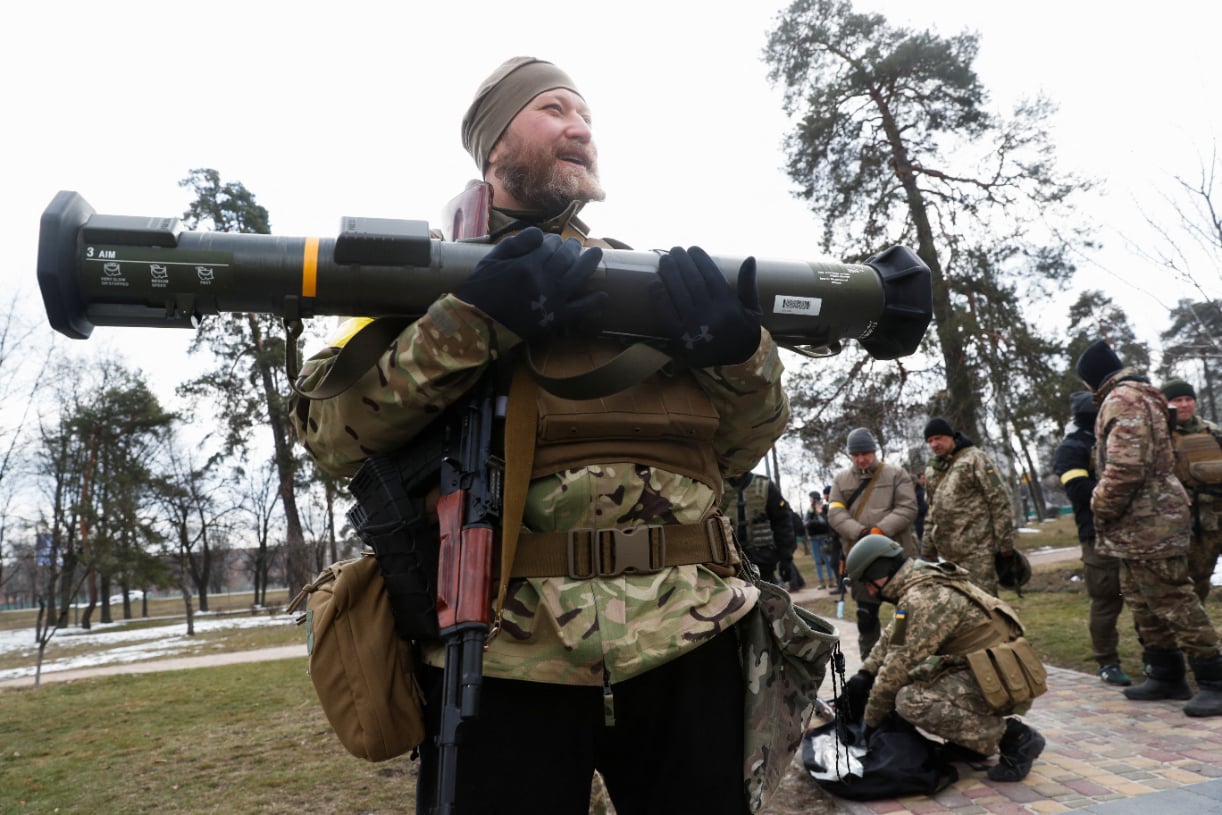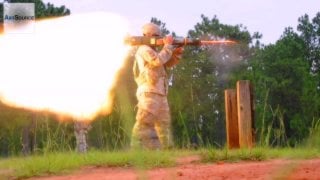AT4: The Old Tank-Killer 'Rocket Launcher' That Won't Go Away
The resurgence of tank warfare in Ukraine has spotlighted the importance of anti-tank weapons, including the Swedish AT4.
Summary: The resurgence of tank warfare in Ukraine has spotlighted the importance of anti-tank weapons, including the Swedish AT4.
-This shoulder-fired, disposable anti-tank missile system, initially adopted by the Swedish Army and later by the U.S., is effective against lighter armored vehicles and buildings.
-While less versatile than its peers like the Javelin and NLAW, the AT4 has played a crucial role in Ukraine, reportedly taking out Russian T-90 tanks.
-Its ease of use and widespread availability have made it a valuable asset in the conflict, despite its limitations in urban settings due to a significant back-blast.
Swedish AT4: The Unsung Hero of Ukraine's Anti-Tank Arsenal
The revival of tank warfare in Ukraine has coincided with a resurgence of interest in anti-tank weapons.
Throughout Russia’s invasion, Western nations have provided Ukrainian forces with sophisticated anti-tank missile systems to aid the country’s defensive efforts.
While news surrounding the role the American-made FGM-148 Javelin and Swedish-made Next Generation Light Anti-tank Weapon have played in the Eastern European conflict has circulated widely over the last year, one anti-tank guided missile (ATGM) is also seeing good use in Ukraine.
The AT4 Swedish shoulder-fired weapon has proven to be a major pain to Moscow’s armored vehicles.
Introducing the AT4: History and Specs
The Swedish Army adopted the predecessor to its indigenous AT4 in the late 1960s.
Within a decade, the weapon’s manufacturer began researching a more advanced variant that would be singularly capable of penetrating heavily armored main battle tanks in frontal engagements. With this design priority in mind, the AT4 was created. The ATGM was conceptualized to be a weapon that could engage lighter armored Main Battle Tanks (MBTs) from any direction and heavily armored MBTs from the sides or rear. In addition to tanks, the AT4’s manufacturer wanted the weapon to be an effective tool against buildings and fortifications.
Prior to the AT4’s introduction to the Swedish army, the AT4 was observed by the U.S. Army after Congress mandated an ATGM competition to replace the M72 LAW. Out of the competition’s six participants, the AT4 was recognized as the winner. The Swedish-made ATGM is a disposable, single-shot unguided launcher that fires an 84mm round. The AT4 is light, portable, and can be easily slung on a soldier’s shoulder.
As outlined in a previous work, “The AT4 is a little over 3 feet (roughly 1 meter) in length and weighs around 15 pounds (6.80 kilograms). The round has a muzzle velocity of 820 feet (250 meters) per second and can penetrate 16 inches (40.64 centimeters) of armor at a maximum effective range of roughly 1,000 feet (305 meters). The projectiles can be high-explosive anti-tank, dual-purpose delayed penetration, high-penetration, and anti-structure for urban combat.”
The AT4 Hosts Many Similarities to the Carl Gustaf
The AT4’s manufacturer, Saab Bofors, implemented many of the same design features that the Cal Gustaf hosts. As a true supergun, the Gustaf can effectively target bunkers, thinly-armored personnel carriers, and even main battle tanks. Like the AT4, the Gustaf is man-portable and shoulder-fired.
However, unlike the Gustaf, the ATF is not reusable. Both weapons are of the same caliber and weight, but the AT4 is intended for two-person operation, unlike the Gustaf.
Despite its Downsides, the AT4 Has Been Used Prominently in Ukraine
Perhaps the AT4’s best quality is that it can be easily used.
The weapon’s simplicity and durability have led to its export across the globe and 20 countries today readily deploy this ATGM. The U.S. military alone has procured more than 600,000 AT4 ATGMs over the years. While the Swedish-made weapon is user-friendly, it also comes with some cons.
One major flaw that the AT4 possesses is that it develops a large back-blast behind the weapon, which could injure the weapon’s operator and nearby friendly forces, according to Army Technology.
Therefore, the AT4 is not as versatile as other portable ATGMs, since it cannot be used in restricted areas frequently present in urban warfare settings. Due to this flaw, in addition to the AT4’s inability to take out main battle tanks easily, the Swedish-made weapon lags behind its Javelin and NLAW near-peer ATGMs. Despite this fact, the weapon has been used effectively in Ukraine.

According to Ukrainian officials, its soldiers were reportedly able to use the AT4 to take out some of Moscow’s top-of-the-line T-90 tanks.
In January of last year, Ukrainian-American journalist Viktor Kovalenko shared a clip of an alleged AT4 attack on social media.
In the footage, plumes of grey smoke can be seen billowing from a damaged T-90 tank.

While the Javelin and NLAW systems will continue to take center stage in Ukraine’s ATGM use, the AT4 should not be dismissed.
About the Author: Maya Carlin
Maya Carlin is an analyst with the Center for Security Policy and a former Anna Sobol Levy Fellow at IDC Herzliya in Israel. She has by-lines in many publications, including The National Interest, Jerusalem Post, and Times of Israel. You can follow her on Twitter: @MayaCarlin.
All images are Creative Commons.


